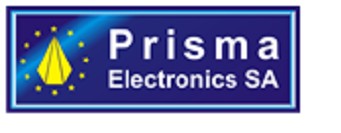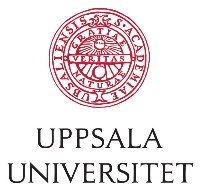Concept of the Nanocom Project
The 2007 edition Strategic Research Agenda (SRA) of the European Nanoelectronics Initiative Advisory Council (ENIAC) exposes a vision of Nanoelectronics that will give next-generation products totally new capabilities and will elevate the society to unprecedented levels, enabling Europe to realise its vision of Ambient Intelligence – living environments that are aware of our presence and responsive to our needs. Especially, in the 'More than Moore' technology domain, one can read that "Intelligent systems need not only memory and processor, but also power, RF interfaces for wired and wireless communication, and sense and actuator functions".
- RF-MEMS have a crucial role to play here through the development of filters, high-Q inductors, tight tolerance capacitors, high-density capacitors and low loss switches to enable novel and improved RF transceiver front-ends.
- Moreover, III-V technologies such as GaN will allow for more efficient RF power applications. In fact, because GaN has power densities ten times larger than Si LDMOS or GaAs, resulting from GaN’s higher breakdown voltage and higher current density, ITRS has pointed out GaN as an emerging technology offering bigger improvements over GaAs in applications such as power amplifiers for base stations.
- Finally, sensors and actuators are used almost everywhere to sense and monitor parameters and to correspondingly control actions of importance and interest in our daily environment. They play an essential role in interfacing electronic systems to real-word users and environments.
Smart and Integrated Micro and Nano Systems represent the next electronic evolutionary step for the simultaneous integration of sensing, processing, actuation and power management, in order to achieve advanced functions such as multi-spectral processing, real time data analysis and adaptability. Future smart systems will have to achieve autonomous and self-reconfigurable operations, for real-time and efficient self-optimization of their performance. The needs for such systems are not only to overcome the design trade-offs that current analog components must endure, but also to realize new and more efficient systems with reduced size, weight, power and cost.
Two technologies are now emerging to face these challenges:
- Wide Band Gap (WBG) semiconductors such as GaN and AlN are expected to play a fundamental role in the development of future smart systems, exhibiting unprecedented power performance along with suitable reconfigurable architectures, and adaptability to operational changes. WBG materials in fact exhibit unique physical properties that make them very attractive, on the one hand, for microwave and millimetre wave applications thanks to high power handling and robustness, and, on the other hand for creating a new generation of sensing devices (high sound velocity, strong piezoelectric effects, etc) capable of working in harsh environments and temperatures higher than 600 °C. It makes them very attractive for numerous applications, ranging from automotive to aeronautics and aerospace, sensors for intelligent energy control to reduce electrical energy consumption, etc. WBG Semiconductors will be the key material for future smart systems.
- RF MEMS switches and RF NEMS switches (used for single pole double throw, SPDT) appear as complementary technologies in order to achieve the re-configurability required for future smart systems, thanks to their high RF performances (power handling, insertion loss or isolation), low power consumption, high linearity and high level of integration.
The route towards re-configurability of high power systems requires the merging of these technologies and functions, but they are not co-integrated up to now. That’s why this project is aimed at bringing together advanced microwave functions using WBG MMICs and sensors along with RF MEMS and RF NEMS active interconnections.
The NANOCOM consortium (made up of 9 partners from 6 countries including 1 major industrial players, 3 SMEs, 4 universities and 1 research centre, all with significant experience in EU funded projects) is confident that the realization of its ambitious objectives will assist Europe to achieve technological leadership in domains that are targeted by ENIAC.
Objectives of the Nanocom project

The ultimate target of this project is to develop the necessary design and technological skills for integrating WBG devices with RF MEMS and RF NEMS active interconnections and with III-Nitride based sensors.
The route towards future smart systems requires the achievement of new components, able to manage simultaneously high power and re-configurability properties. To solve this strategic issue, two solutions will be considered in parallel during this project. They are considered by the consortium as the best technical alternatives today, to the best of our knowledge, and are foreseen to level up the performances while keeping the costs at the lowest level, by their full compatibility with collective processes:
- Integration of WBG devices with RF MEMS technology.
- Integration of WBG devices with RF NEMS technology based on carbon nanotubes.
Each of the above technological solutions has their own advantages and drawbacks. This is why the project will conduct research in the two domains. NEMS are expected to achieve very low switching times (down to a few ns) and actuation voltage (down to a few V) whereas MEMS promise very high power handling capabilities.
One objective is to develop the design methodologies and technological steps necessary to achieve the integration of WBG RF devices such as GaN based MMICs with III-Nitrides (GaN, AlN) sensors for the realization of subsystems required for future smart systems. The potential of WBG based micro and nano devices as sensors and their integration with WBG RF electronics will be demonstrated.
The successful implementation of the objective mentioned above (Integration of WBG MMICs, RF-MEMS/NEMS and sensors), coupled with a thorough assessment of the market and the needs of end-user/industrial partner of the consortium (TSA), will lead to the production of four demonstrators in order to prove the feasibility of the various technologies and their integration.














